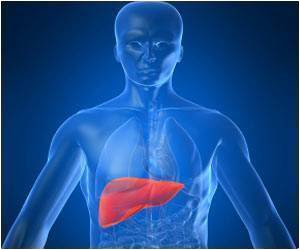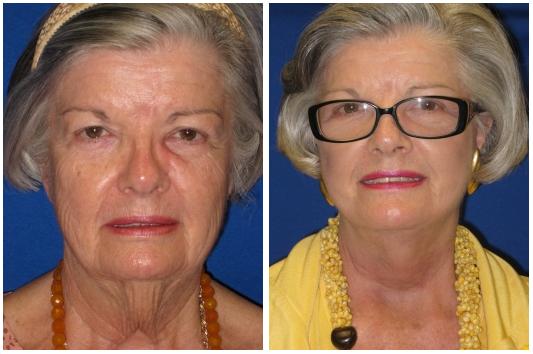Liver Cancer Screening, Study Doubts Value
Screening people with alcoholic liver damage for signs of cancer may not be worth the expense or other downsides, a new report says.
Alcoholism can lead to cirrhosis, or scarring, of the liver. People with cirrhosis have a higher-than-average risk of developing liver cancer, but it is not clear whether screening people with cirrhosis for the cancer extends lives.
In the new study, Danish researchers found that for alcoholic cirrhosis patients in their country, the risk of liver cancer is so low that screening may not be justified.
Of nearly 8,500 Danish adults hospitalized for alcoholic cirrhosis, the chance of developing liver cancer in the next five years was 1 percent, the study found.
That's well below the risk that justifies cancer screening, based on U.S. guidelines for cost-effectiveness.
In the U.S., an abdominal ultrasound would typically cost a few hundred dollars. Follow-up tests, if needed, could cost much more. But there are more than costs to consider when it comes to widespread cancer screening, said the lead researcher on the new study, Dr. Peter Jepsen of Aarhus University Hospital.
Screening always carries some risk of falsely suggesting a person has cancer. And that leads to unnecessary further testing, which may be invasive.
Ultrasound is the method of choice for liver cancer screening, Jepsen told Reuters Health in an email. If that test suggests there is a tumor, the next step is usually a CT scan, which exposes the patient to radiation (at a much higher dose than with standard x-rays).
So the benefits of liver screening would need to outweigh the risks in order to recommend routinely screening people with alcoholic cirrhosis.
The current findings suggest they do not, Jepsen's team reports in the Annals of Internal Medicine.
SPECIALIST GROUPS ALONE
The U.S. Preventive Services Task Force, a government-backed independent expert panel, has no recommendation on liver cancer screening.
Right now, screening is recommended by two specialist groups the American Association for the Study of Liver Diseases and the European Association for the Study of the Liver.
Both groups suggest that cirrhosis patients be screened every six months, Jepsen noted.
"But whether clinicians are actually offering this to their patients, and whether patients are compliant with (screening) if given the offer are unknown," Jepsen said.
The American liver diseases group could not be reached for comment.
The recommendations from the specialist groups are based on the common belief that alcoholic cirrhosis patients have a liver cancer risk that tops 1.5 percent per year. (That's the level at which screening is considered cost-effective.)
But Jepsen's team says the risk may actually be much lower a 1 percent chance over five years, based on their findings.
What's more, the researchers found, less than 2 percent of deaths in their study group were due to liver cancer.
Some past studies in various countries have suggested that liver cancer is a bigger risk for alcoholic cirrhosis patients than the current study implies. (A study in France, for example, found that cirrhosis patients developed cancer at a rate of over 5 percent per year.)
But Jepsen said the bigger numbers are based on "clinic-based" studies, which look at select groups of patients being treated at medical centers.
His team's study, in contrast, was population-based. They had information on all 8,482 Danish citizens who had a first-time hospitalization for alcoholic cirrhosis between 1993 and 2005.
Population-based studies give a clearer idea of the liver cancer risk for the typical alcoholic cirrhosis patient.
Jepsen said he thinks his team's findings are likely to be relevant to countries other than Denmark. The higher rates that have been in some other countries, he noted, are probably because of study design, rather than actual geographic variation.
By: updatednews
Alcoholism can lead to cirrhosis, or scarring, of the liver. People with cirrhosis have a higher-than-average risk of developing liver cancer, but it is not clear whether screening people with cirrhosis for the cancer extends lives.
In the new study, Danish researchers found that for alcoholic cirrhosis patients in their country, the risk of liver cancer is so low that screening may not be justified.
Of nearly 8,500 Danish adults hospitalized for alcoholic cirrhosis, the chance of developing liver cancer in the next five years was 1 percent, the study found.
That's well below the risk that justifies cancer screening, based on U.S. guidelines for cost-effectiveness.
In the U.S., an abdominal ultrasound would typically cost a few hundred dollars. Follow-up tests, if needed, could cost much more. But there are more than costs to consider when it comes to widespread cancer screening, said the lead researcher on the new study, Dr. Peter Jepsen of Aarhus University Hospital.
Screening always carries some risk of falsely suggesting a person has cancer. And that leads to unnecessary further testing, which may be invasive.
Ultrasound is the method of choice for liver cancer screening, Jepsen told Reuters Health in an email. If that test suggests there is a tumor, the next step is usually a CT scan, which exposes the patient to radiation (at a much higher dose than with standard x-rays).
So the benefits of liver screening would need to outweigh the risks in order to recommend routinely screening people with alcoholic cirrhosis.
The current findings suggest they do not, Jepsen's team reports in the Annals of Internal Medicine.
SPECIALIST GROUPS ALONE
The U.S. Preventive Services Task Force, a government-backed independent expert panel, has no recommendation on liver cancer screening.
Right now, screening is recommended by two specialist groups the American Association for the Study of Liver Diseases and the European Association for the Study of the Liver.
Both groups suggest that cirrhosis patients be screened every six months, Jepsen noted.
"But whether clinicians are actually offering this to their patients, and whether patients are compliant with (screening) if given the offer are unknown," Jepsen said.
The American liver diseases group could not be reached for comment.
The recommendations from the specialist groups are based on the common belief that alcoholic cirrhosis patients have a liver cancer risk that tops 1.5 percent per year. (That's the level at which screening is considered cost-effective.)
But Jepsen's team says the risk may actually be much lower a 1 percent chance over five years, based on their findings.
What's more, the researchers found, less than 2 percent of deaths in their study group were due to liver cancer.
Some past studies in various countries have suggested that liver cancer is a bigger risk for alcoholic cirrhosis patients than the current study implies. (A study in France, for example, found that cirrhosis patients developed cancer at a rate of over 5 percent per year.)
But Jepsen said the bigger numbers are based on "clinic-based" studies, which look at select groups of patients being treated at medical centers.
His team's study, in contrast, was population-based. They had information on all 8,482 Danish citizens who had a first-time hospitalization for alcoholic cirrhosis between 1993 and 2005.
Population-based studies give a clearer idea of the liver cancer risk for the typical alcoholic cirrhosis patient.
Jepsen said he thinks his team's findings are likely to be relevant to countries other than Denmark. The higher rates that have been in some other countries, he noted, are probably because of study design, rather than actual geographic variation.
By: updatednews




Well thats kind of good news, one of my relatives has cirrhosis so it's good to know the likelyhood of cancer is not very high.
ReplyDelete